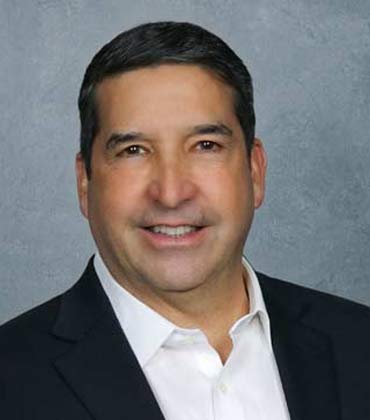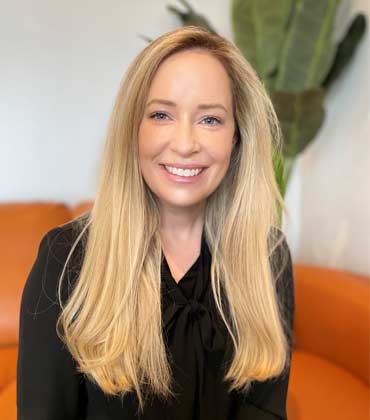THANK YOU FOR SUBSCRIBING
By Paul Suarez, Chief Information Security Officer, Caseys
Disciplines in Cybersecurity in the New Market
By Corene Canning, Technical Development Manager, Health & Nutrition - Americas at Brenntag North America
Functional Beverages; The Booming Category Where...
By Karthik Sekar, Senior Data Scientist, Climax Foods
We Can Replace Animal Agriculture. Here's How.

Plastic-FREE FOODSERVICE?
Todd Jongen, Sr. Director Non-Foods Product Development And Packaging Science, US. Foods

 Todd Jongen, Sr. Director Non-Foods Product Development And Packaging Science, US. Foods
Todd Jongen, Sr. Director Non-Foods Product Development And Packaging Science, US. FoodsWhen I was a kid and on that rare occasion, my family went out to eat, if you had leftover food, you asked for a “doggie bag”. This was usually a paper bag or a paper foil laminated bag and often times the bag included a drawing of a dog on the side to make it perfectly clear that the meal inside was not for you it was for your pet. That was the state of “carry out packaging” in those days. The food you took away from the restaurant was meant as a treat for your dog and not really considered suitable for human consumption.
Fast forward to today. The doggie bag has been replaced by a plethora of containers, boxes and bags made from a wide range of materials and designed to meet an ever-changing market need. Millennials and Gen Z consumers are changing the face of carry out. Restaurants that in the past would have never considered a “Carry Out” program are getting on board and finding new ways to dazzle this growing customer base with mobile cuisine.
"The quest continues to create a ultra-high-performance carry out packaging solution that can deliver a great foodservice experience"
This new generation of foodservice diners is not always interested in spending time in a restaurant. They enjoy mobility and the option to eat on the go or to have any food they desire delivered to their home or to wherever they happen to be. Technologies such as Grub Hub and Uber Eats have enabled consumers to “have it their way”. This trend has created an increased need for effective carry-out packaging options. Packaging that can provide consumers with the same food experience that they would enjoy if they ordered in the restaurant dining room. The food must be protected, it must look appealing and it must be temperature and texture correct. If a food is served hot and crispy at the restaurant there is an equal expectation of hot and crispy upon delivery. Challenging right? Yes, it is and frankly, it is not always completely successful.
There is no doubt that carry out food packaging has evolved a lot over the years in order to meet the ever-changing demands. With the continued increase in the demand for disposable to-go packaging has come an increased awareness of the presence of this discarded “one-time use” packaging in our environment. Components of a carry out meal can be found lingering around almost every corner it seems. Not only in our landfills but in our waterways, streets and parks. This awareness can be seen in a growing trend to limit or even ban the use of some of this packaging. The current focus of these efforts center around what is being termed “one-time-use” plastics. Recent plastic straw legislation is probably the most recognizable example of this movement but other materials like EPS (Expanded Polystyrene) foam containers and HDPE (High Density Polyethylene) grocery bags among others have also been under fire.
This is creating an increase in demand for plastic free disposable packaging and more specifically for compostable packaging. There are products today that are made from sugar cane fibers or wheat straw fibers which were previously both considered agricultural waste materials. Fibers from these plants can be molded into containers that can replace traditional plastic or foam containers. There are compostable utensils being made from wood or bioplastics like PLA that are meant to replace tradition fossil fuel based Polystyrene or Polypropylene utensils. Of course, there are also now a plethora of alternatives to the plastic straw that include paper straws, PLA straws and straws made from natural reeds and grasses. There are technologies that can make these mostly plant based alternatives more resistant to moisture and grease. They can be designed to have some level of insulative properties to keep hot foods hot and cold foods cold. They can even be treated so that they don’t impart a paper or wood taste. But these technologies are still evolving and there is a constant struggle to improve the food holding performance of these products while still maintaining the ability to compost them.
So the quest continues to create ultra-high-performance carry out packaging that can deliver a foodservice experience to rival what you would get in the restaurant while also delivering a “back to basics” package made from natural fibers or plant-based materials that will compost. The solution to meet both demands is not an easy one and has not yet fully realized. The day when restaurants have only compost receptacles in place and there are no trash cans has not yet arrived, but it may be coming sooner than we might think.
See More:
Top Plastic Tech Companies
Top Plastic Tech Consulting Companies
Read Also













